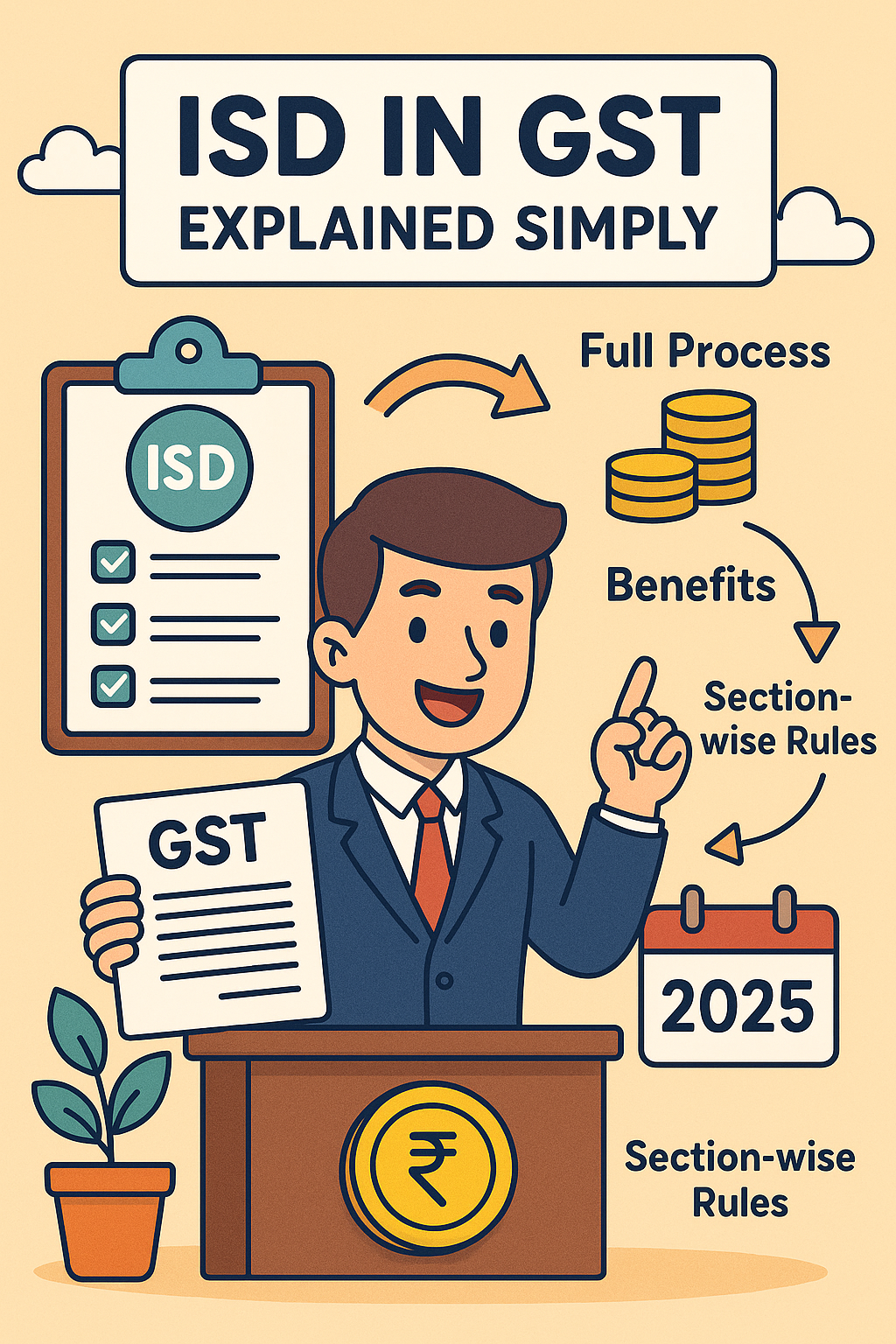Are you a business with multiple branches across India? Confused about how to share input tax credit (ITC) of services like audit fees, rent, or software across locations?
That’s where ISD under GST comes into the picture. This guide will help you understand everything about Input Service Distributor(ISD) in GST in a simple way.
Table of Contents
What is ISD (Input Service Distributor) in GST?
Input Service Distributor (ISD) is a mechanism where one GST-registered office (usually the head office) receives input tax credit (ITC) on common services used for multiple units, and then distributes that ITC to the respective branches.
Example:
If your head office pays ₹18,000 GST on audit fees and the audit is for 3 branches, the head office (ISD) can distribute ₹6,000 credit to each branch.
Why ISD is Important for Businesses
- Helps in smooth ITC distribution
- Avoids blockage of credit at one location
- Makes accounting and tax filing easier
- Useful for centralized services like HR, audit, rent, software, advertisement, etc.
Legal Provisions Related to ISD
| Topic | Relevant GST Section/Rule |
|---|---|
| Definition of ISD | Section 2(61) of CGST Act |
| Registration requirement | Rule 9 of CGST Rules |
| Distribution rules | Rule 39 of CGST Rules |
| ISD invoice rules | Rule 54(1) of CGST Rules |
| Monthly return | GSTR-6 |
Who Should Register as ISD?
Any business with multiple GST registrations under the same PAN and common service usage should register one unit (usually the head office) as an ISD.
Note: ISD requires a separate GSTIN, different from the normal registration.
How ISD Works – Step-by-Step Example
Suppose:
- Head Office: Delhi
- Branches: Mumbai and Bangalore
- Audit fees paid by Head Office = ₹1,00,000 + ₹18,000 GST
The GST of ₹18,000 can be distributed by the Delhi HO (ISD) equally to Mumbai and Bangalore, i.e., ₹9,000 each.
This ITC will reflect in the GSTR-2B of the branches automatically.
Conditions for Distribution of ITC
- Only input services are allowed (no goods or capital goods)
- ITC must be distributed to units having the same PAN
- Distribution should be in proportion to turnover of each unit
- A separate ISD invoice must be issued
GSTR-6 Return for ISD
- ISD must file GSTR-6 every month
- Due date: 13th of the next month
- Purpose: Declare and distribute ITC to branches
- Late fee applies for delay
Common Mistakes to Avoid
- Claiming ITC for goods under ISD (not allowed)
- Not using a separate GSTIN for ISD
- Distributing ITC to unrelated parties (only same PAN allowed)
- Not filing GSTR-6 on time
Difference Between ISD and Cross Charge
| Basis | ISD | Cross Charge |
|---|---|---|
| Transfers | Input tax credit | Actual value of service |
| GST invoice | ISD invoice | Tax invoice |
| Involves supply | No | Yes |
| Used for | Common input services | Actual service rendered between branches |
Real-Life Example
A garment brand based in Jaipur has 6 branches across India. The Delhi head office pays ₹12 lakhs plus GST for brand advertisement. Using ISD registration, the company distributes the GST ITC across all branches as per their turnover, saving a large amount in tax liability.
Final Tips
- Use ISD registration if you have centralized expenses used across branches
- Maintain proper records and separate books for ISD GSTIN
- Don’t include ITC of goods or capital assets in ISD distribution
- File GSTR-6 monthly and issue proper ISD invoices
Conclusion
Input Service Distributor (ISD) under GST is a powerful mechanism for companies with multiple branches. It ensures fair distribution of ITC and improves tax efficiency. With proper compliance and timely filing, ISD can become a big benefit for your business.
Contact taxgiveindia.com for ISD registration and other services.
